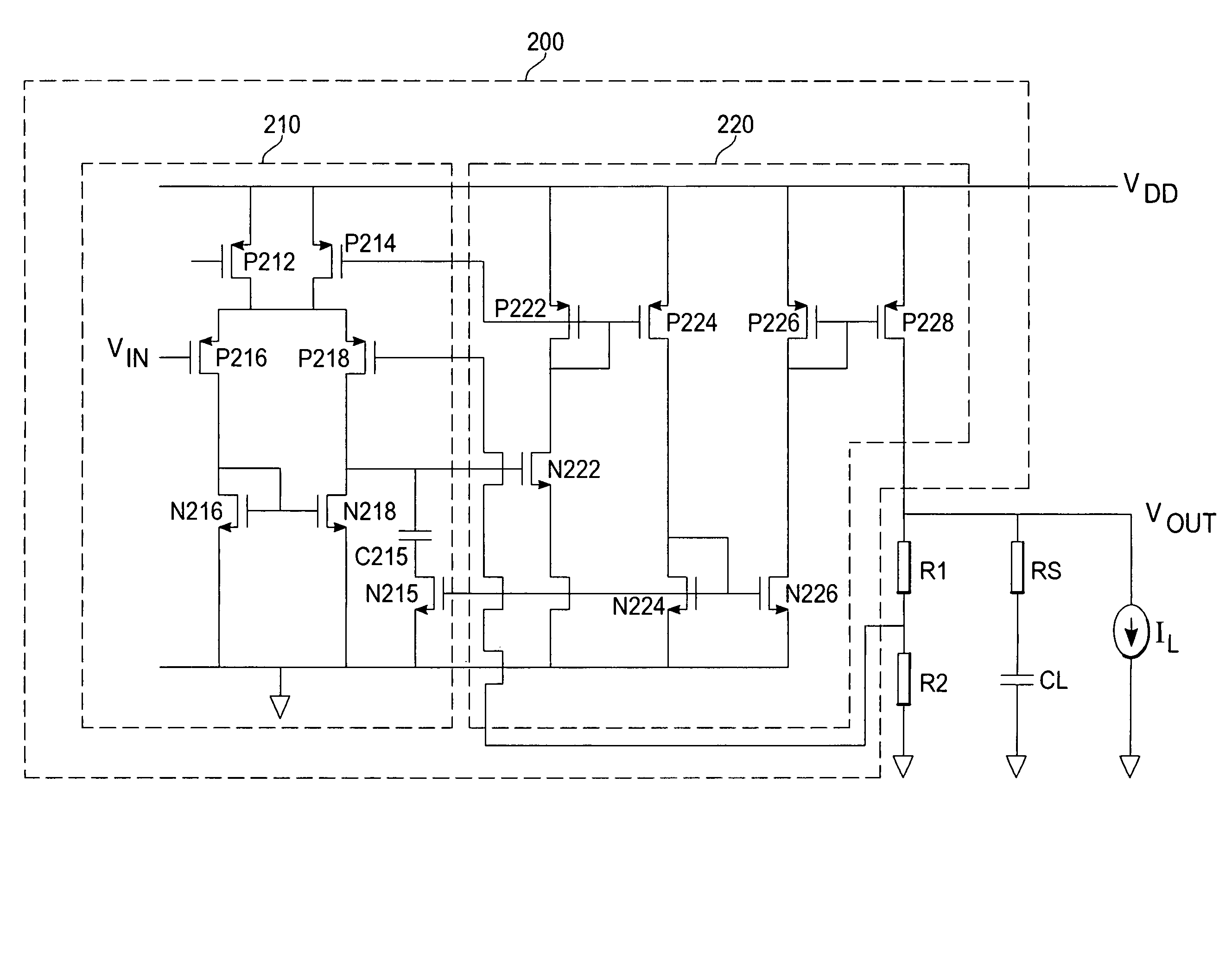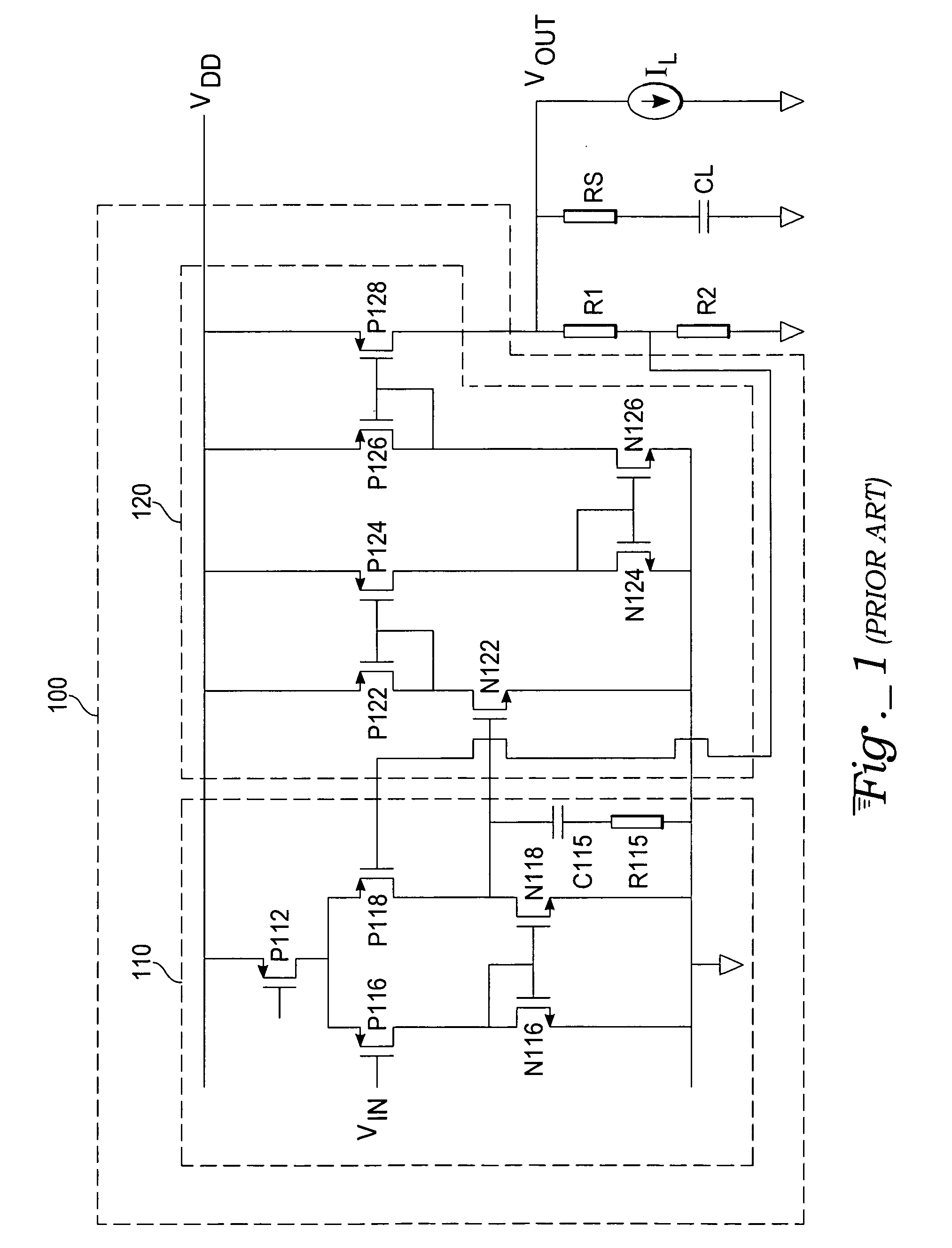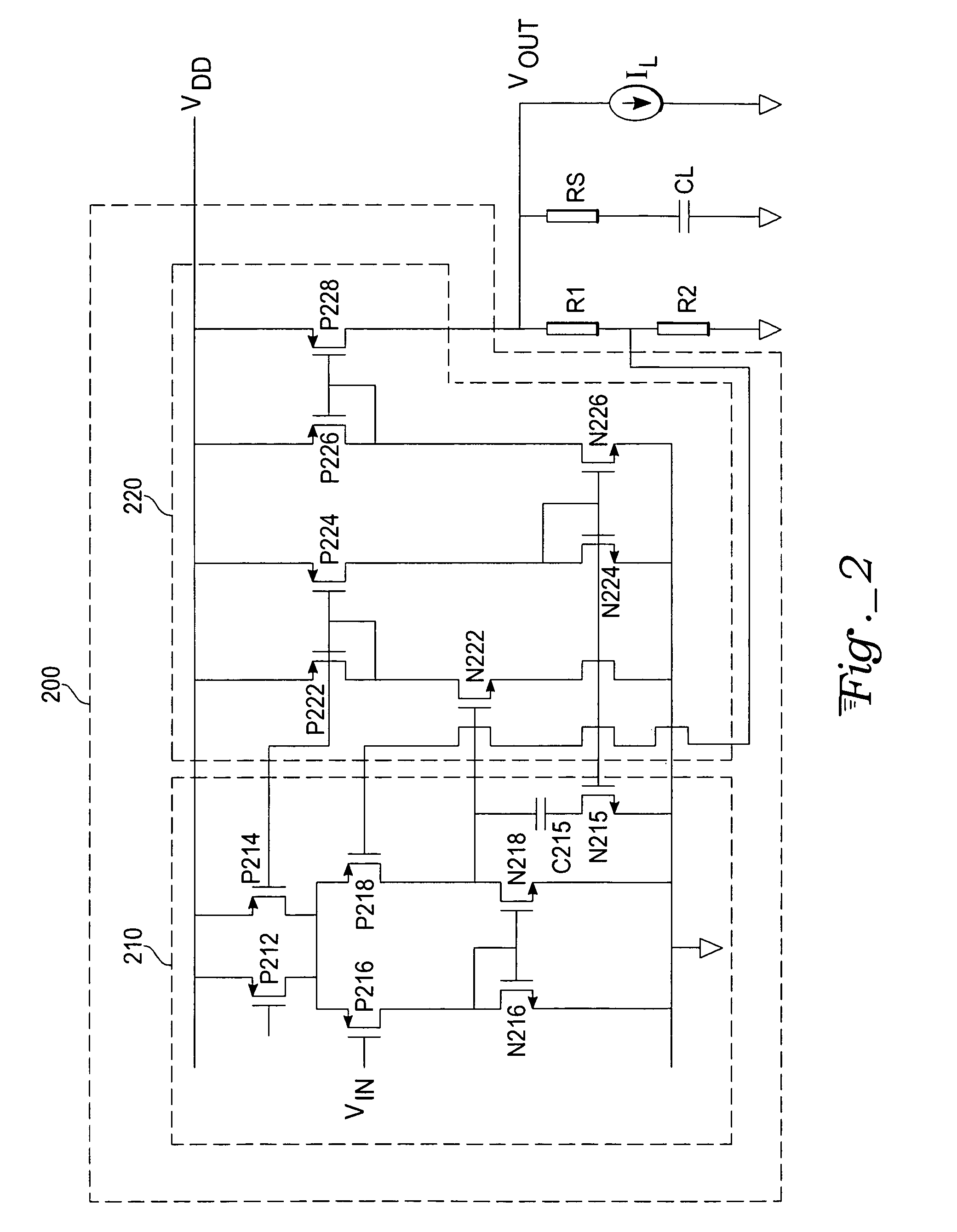Standard CMOS low-noise high PSRR low drop-out regulator with new dynamic compensation
a voltage regulator and dynamic compensation technology, applied in the field of integrated circuits, can solve the problems of reducing the noise performance of the regulator, affecting the performance of the voltage regulator, and affecting the performance of the circuit structure, so as to improve the noise performance of the voltage regulator, improve the voltage regulator, and improve the effect of the voltage regulator
- Summary
- Abstract
- Description
- Claims
- Application Information
AI Technical Summary
Benefits of technology
Problems solved by technology
Method used
Image
Examples
Embodiment Construction
[0057]With reference to FIG. 2, exemplary regulator circuit 200 comprises a first amplifier stage 210 and a second amplifier stage 220. The first amplifier stage 210 comprises PMOS transistors P212, P214, P216, and P218. The first amplifier stage 210 further comprises a zero stabilizing capacitor C215, diode-connected NMOS transistor N216, resistor-like NMOS transistor N215 and NMOS transistor N218. The second amplifier stage 220 comprises diode-connected PMOS transistors P222 and P226, a PMOS transistor P224, a PMOS power transistor P228, a diode-connected NMOS transistor N224, and NMOS transistors N222 and N226.
[0058]The PMOS transistor P212 has its source terminal coupled to a first power supply potential VDD, its gate terminal coupled to a constant bias potential, and its drain terminal coupled to a drain terminal of PMOS transistor P214. The drain terminal of PMOS transistor P212 is further coupled to the source terminal of PMOS transistor P216 and to the source terminal of PMO...
PUM
 Login to View More
Login to View More Abstract
Description
Claims
Application Information
 Login to View More
Login to View More - R&D
- Intellectual Property
- Life Sciences
- Materials
- Tech Scout
- Unparalleled Data Quality
- Higher Quality Content
- 60% Fewer Hallucinations
Browse by: Latest US Patents, China's latest patents, Technical Efficacy Thesaurus, Application Domain, Technology Topic, Popular Technical Reports.
© 2025 PatSnap. All rights reserved.Legal|Privacy policy|Modern Slavery Act Transparency Statement|Sitemap|About US| Contact US: help@patsnap.com



